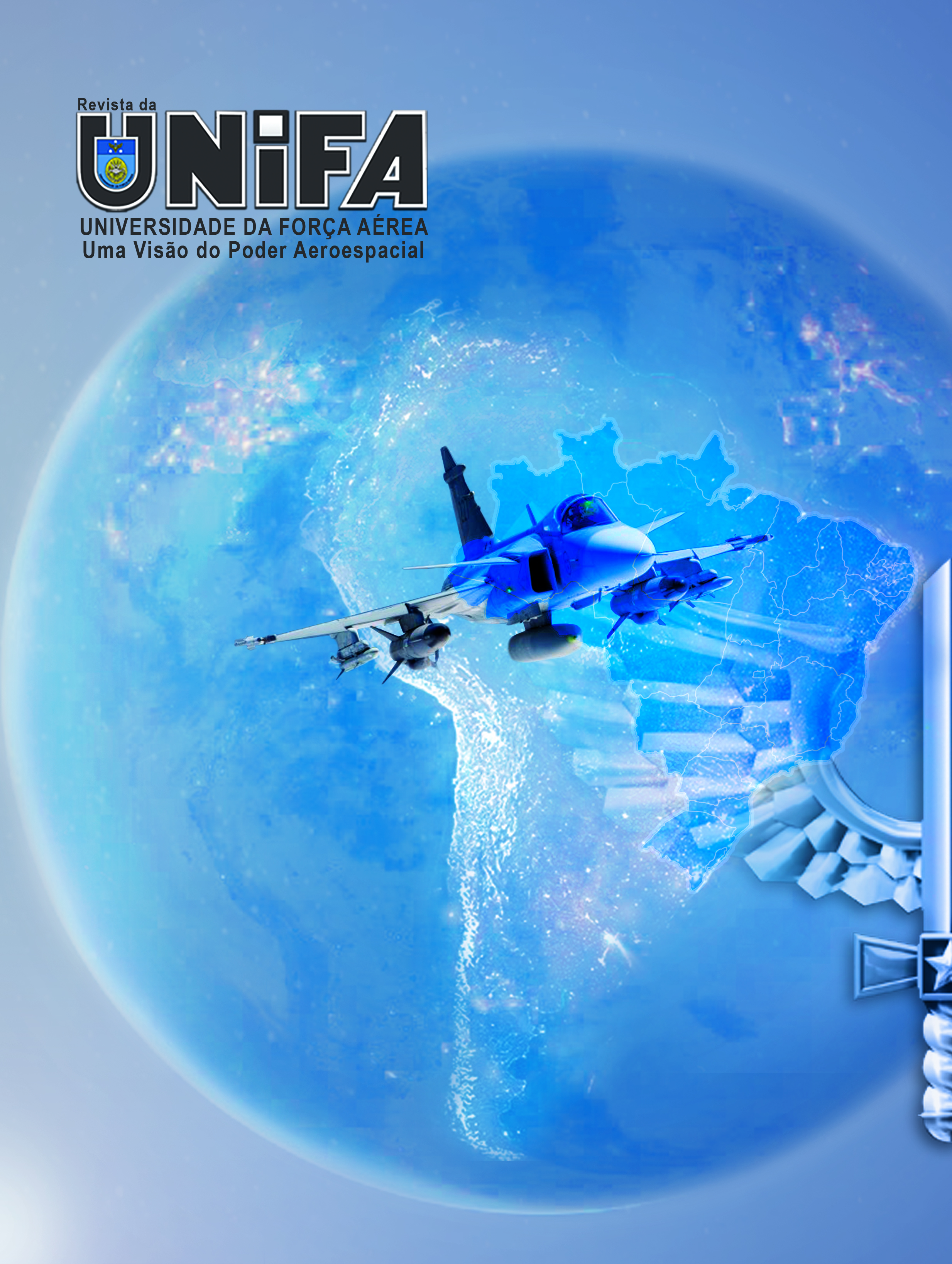The influence of pilots’ understanding of the interaction of risk factors in the maximum effort landing operation in Antarctica
DOI:
https://doi.org/10.22480/revunifa.2020.33.224Keywords:
Antarctica, Maximum landing effort, Risk factors, UnderstandingAbstract
This research aimed to identify the influence of pilots’ understanding of the interaction of risk factors in the maximum effort landing operation in Antarctica. In this regard, a documentary investigation was
initially carried out to determine, among the planning factors of the maximum effort landing, which ones
are risk factors in the Antarctic context. By applying the matrix arrangement proposed by the Brasiliano Risk Analysis Method, the identified variables were classified according to their motor and dependency characteristics. Next, a survey was conducted with the Antarctic Crew Charter pilots to verify what crew members understood regarding the interaction between factors, which were also subjected to a matrix arrangement and classified according to the method proposed by Brasiliano (2006). The comparison
between the classification obtained in the survey and the pilots’ perception indicated differences in the location of the factors “wind”, “contamination” and “point of contact”, which were understood by the crew members as those with less influence on the system. Therefore, it was found that such difference may be an indication of a low situational awareness at the
level of “understanding”, which refers to the ability of understanding, interpreting and evaluating data,
according to Endsley (1999). After such findings, it was concluded that an inadequate understanding of the
interaction of risk factors can contribute to accidents or incidents in the operation in SCRM, increasing the
possibility of events such as runway departures or loss of lateral control of the aircraft.
References
ALMEIDA, C. A. et al. Ocorrências Aeronáuticas: Panorama Estatístico da Aviação Brasileira - Aviação Civil 2006-2015. Centro de Investigação e Prevenção de Acidentes Aeronáuticos. Brasília, 2016, 117 p.
BRASIL. Comando da Aeronáutica. Ala 11. ICA 11- 170 – Plano de Trabalho Anual do 1°/1°GT. Rio de Janeiro, 2017.
BRASIL. Comando da Aeronáutica. Centro de Investigação e Prevenção de Acidentes Aeronáuticos. Divulgação Operacional (DIVOP): Excursão de Pista no Contexto da FAB. Brasília, 2016a.
BRASIL. Comando da Aeronáutica. Centro de Investigação e Prevenção de Acidentes Aeronáuticos. Relatório final de acidente: FAB 2470 de 14 nov. 2014. Brasília, 2016b. 28 p.
BRASIL. Comando da Aeronáutica. Comando Geral de Apoio. TO 1C-130H-1: Manual de Voo da aeronave C-130. Rio de Janeiro, 2006a.
BRASIL. Comando da Aeronáutica. Comando Geral de Apoio. TO 1C-130H-1-1: Manual de Performance da aeronave C-130. Rio de Janeiro, 2006b.
BRASIL. Comando da Aeronáutica. Comando Geral de Operações Aéreas. MCA 55-53 – Manual da Ação de Transporte Aéreo Logístico no Continente Antártico. Rio de Janeiro, 2014.
BRASILIANO, A. C. R. Análise de risco: método Brasiliano. São Paulo: Sicurezza, 2006.
BRASILIANO, A. C. R. Método Avançado de Análise de Riscos: resposta aos riscos corporativos. São Paulo: Brasiliano & Associados, 2009.
BRITO, O. S. G. Gestão de Riscos: uma abordagem orientada aos riscos operacionais. São Paulo: Saraiva, 2007.
CARRASCO, J. C. Climatología de la Península Antártica y del Centro Meteorológico Eduardo Frei Montalva. Direccion General de Aeronautica Civil Dirección Meteorológica de Chile. Santiago, 2007.
CIVIL AVIATION AUTHORITY. Takeoff and Landing Performance. 2014. Disponível em: https://www.caa.govt.nz/safety_info/GAPs/Takeoff_ Landing.pdf. Acesso em: 20 set. 2017.
ENDSLEY, M. R. Situation Awareness in Aviation Systems. In: Garland, D. J.; Wise, J. A.; Hopkin, V. D. Handbook of aviation human factors. Mahwah, NJ: Lawrence Erlbaum Associates, 1999. p. 257-276.
FEDERAL AVIATION ADMINISTRATION. Mitigating the Risks of a Runway Overrun Upon Landing AC 91-79A: Change 1. 2016b. Disponível em: https://www.faa.gov/ documentLibrary/media/Advisory_Circular/AC_91- 79A_CHG_1.pdf. Acesso em: 21 set. 2017.
FEDERAL AVIATION ADMINISTRATION. Pilot’s Handbook of Aeronautical Knowledge. 2016a. Disponível em: https://www.faa.gov/regulations_ policies/handbooks_manuals/aviation/phak/media/ pilot_handbook.pdf. Acesso em: 21 set. 2017.
FLIGHT SAFETY FOUNDATION. ALAR Briefing Note 8.3: Landing Distances. 2009c. Disponível em: https://www.skybrary.aero/bookshelf/ books/867.pdf. Acesso em: 22 set. 2017.
FLIGHT SAFETY FOUNDATION. ALAR Tool Kit: 8.7: Crosswind Landings. 2009b. Disponível em: https://www.skybrary.aero/bookshelf/books/871.pdf. Acesso em: 22 set. 2017.
FLIGHT SAFETY FOUNDATION. Reducing the Risk of Runway Excursion. 2009a. Disponível em: https://flightsafety.org/files/RERR/fsf-runway-excursions-report.pdf. Acesso em: 22 set. 2017.
GAVA, W. E. Análise da percepção dos pilotos de VH-35 sobre os fatores de planejamento da decolagem CAT A em helipontos elevados. 2013. 18 f. Artigo Científico (Curso de Aperfeiçoamento de Oficiais)-Escola de Aperfeiçoamento de Oficiais da Aeronáutica, Universidade da Força Aérea, Rio de Janeiro, RJ, 2013.
GAVA, W. E. Análise de Risco da Operação de Helicópteros na Região Amazônica. 2011. 136 f. Dissertação (Mestrado em Segurança de Aviação e Aeronavegabilidade Continuada) - Curso de Engenharia Aeronáutica e Mecânica, Instituto Tecnológico de Aeronáutica, São José dos Campos, SP, 2011.
GIL, A. C. Como elaborar projetos de pesquisa. 4. ed. São Paulo: Atlas, 2002.
GODET, M. Manual de prospectiva estratégica: da antecipação à acção. Tradução de J. Freitas e Silva. Lisboa: Dom Quixote, 1993.
LAKATOS, E. M.; MARCONI, M. A. Fundamentos da metodologia científica. São Paulo: Atlas, 2003.
Downloads
Published
Issue
Section
License
LicenseRevista da UNIFA permite que o (s) autor (es) mantenha(m) seus direitos autorais sem restrições. Atribuição-NãoComercial 4.0 Internacional (CC BY-NC 4.0) - Revista da UNIFA é regida pela licença CC-BY-NC









